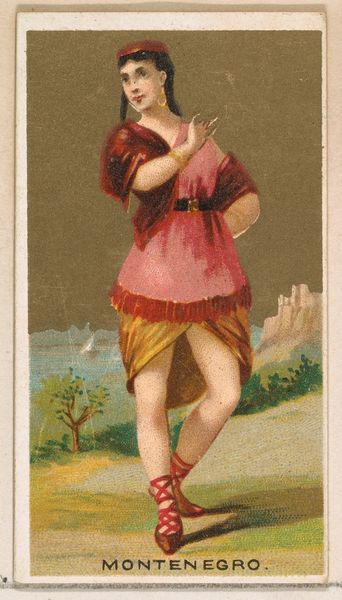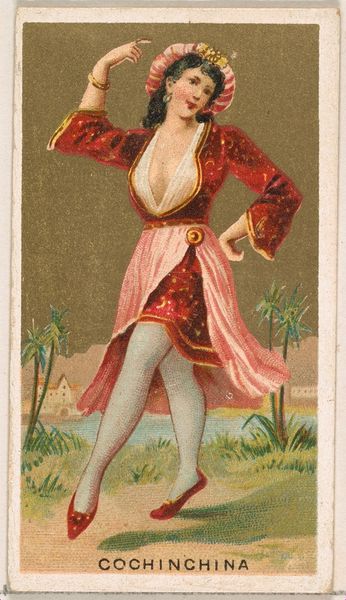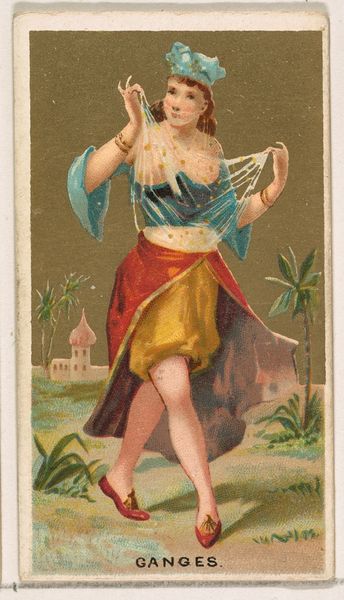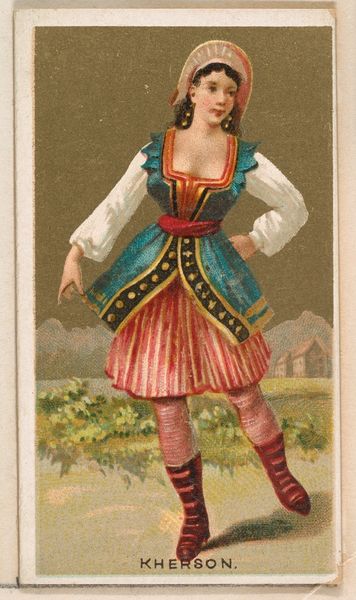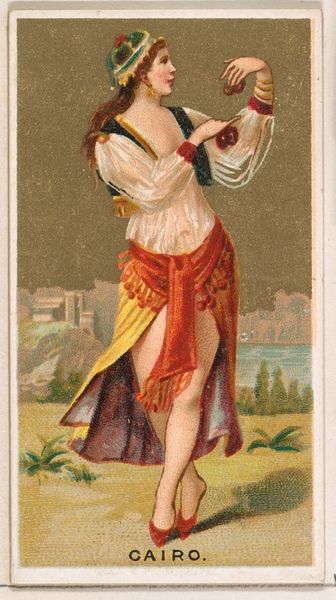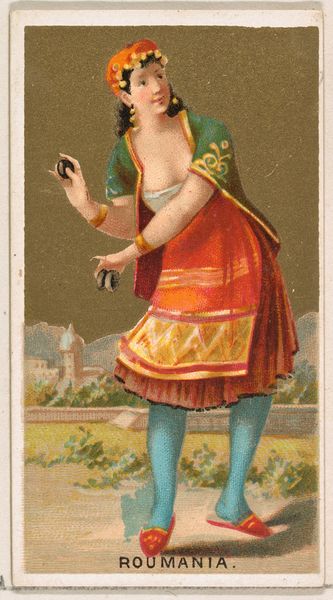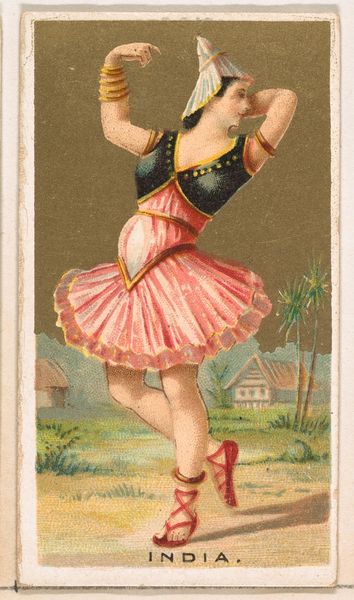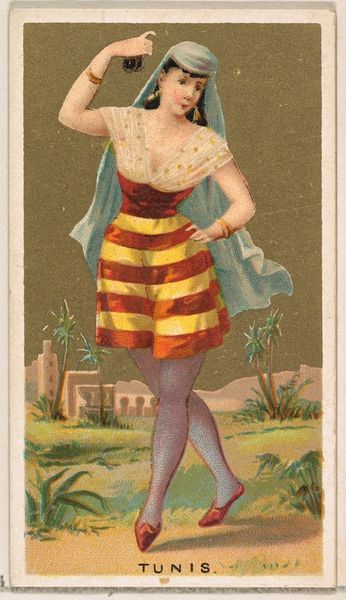
China, from the Dancing Girls of the World series (N185) issued by Wm. S. Kimball & Co. 1889
0:00
0:00
Dimensions: Sheet: 2 11/16 × 1 1/2 in. (6.8 × 3.8 cm)
Copyright: Public Domain
Curator: Let’s discuss “China, from the Dancing Girls of the World series,” a lithograph print made around 1889 by Wm. S. Kimball & Co. Editor: My first impression is how dreamlike it seems. There's a deliberate artificiality, from the dancer's pose to the oddly hued landscape behind her. Curator: It's definitely stylized. These cards, trading cards included with tobacco products, reflected a burgeoning interest in global cultures through a distinct Orientalist lens. The series attempts to categorize "types" of women, framing them within Western expectations of beauty and performance. Editor: Absolutely. Her attire, while vaguely referencing East Asian clothing, feels more like a theatrical costume, filled with motifs and details which would probably appear strange to anyone who grew up within China at the time. Curator: Consider her posture. It seems to combine elements of ballet and perhaps gestures interpreted as "exotic," crafted for the Western gaze. This links to debates surrounding cultural appropriation and the representation of the "Other." Editor: I notice a specific effort to employ recognizable and recurring symbolic markers: The pagoda in the background evokes idealized versions of China, acting as a visual shortcut. The colors also speak volumes—the vibrant red perhaps associated with celebrations, while the muted gold background hints at a storied history, albeit through a Western filter. Curator: The use of lithography also contributes to this, as the style invokes flatness and an even distribution of ink—which reflects commercial and consumer cultures of the late 19th century as well as biases of how race and gender roles were rigidly portrayed and enforced. Editor: So much history is captured within these small decorative cards, yet so much is left unsaid, urging us to think critically. Curator: I agree. Its simplicity reveals complex networks of power, desire, and prejudice shaping representations of women and cultural identity.
Comments
No comments
Be the first to comment and join the conversation on the ultimate creative platform.


